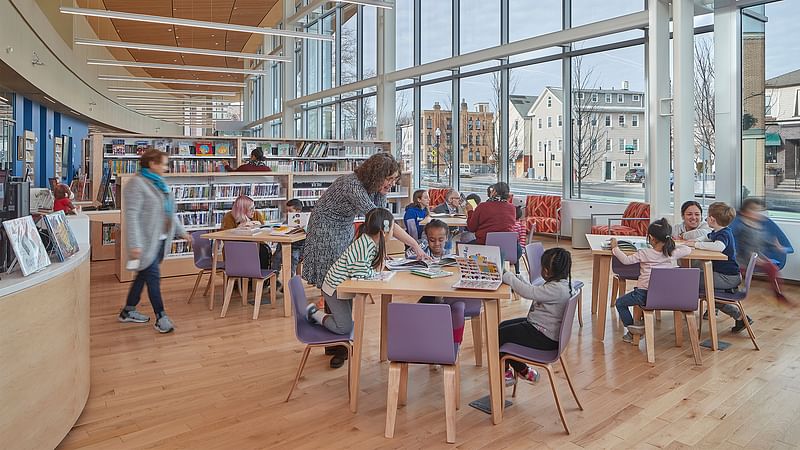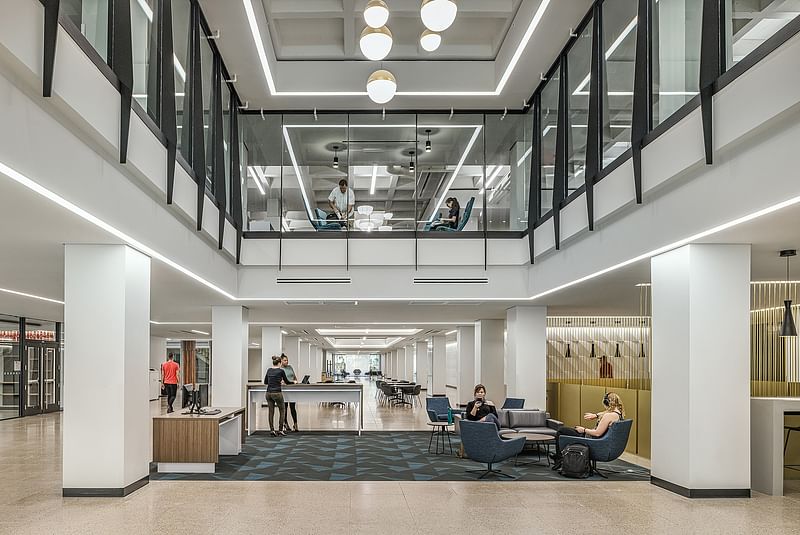Winners of the 2021 AIA/ALA Library Building Awards
By Josh Niland|
Monday, May 17, 2021

Related
The American Institute of Architects, in conjunction with the American Library Association, recently revealed the five winners of this year's Library Building Awards.
Led by the new Valente Library in Cambridge, the quintet of honorees highlights a mix of both new building and renovation characterized by an incorporation of social practice that has dominated library building in recent years.

The William Rawn Associates-designed building opened in 2019 and features a bocce court and inviting glazed facade that anchors a crescent-shaped plaza in the heart of the city’s diverse Inman Square neighborhood. Its focus as a community center that provides on-site conference rooms, strong Wi-Fi, and expanded shelf space is made possible thanks to the new 10,000-square-foot branch, which is nearly twice the size of its predecessor.

Another Boston-area project is the 2020 renovation of the BPL’s Roxbury Branch location, previously occupied by a brutalist structure built in 1978 by local firm Kallmann and McKinnell, one of the firms that helped design Boston’s polarizing City Hall.

With a price tag of $14.7 Million, the new library reimagines the space as an accessible and engaging civic-oriented structure thanks in part to a 2013 programming study that guided Utile’s vision for the library, ultimately yielding a glass curtain wall, open staircase, and an improved signage and front entrance in step with Roxbury’s renamed Nubian Square neighborhood.

Other winners of this year’s award include a “reinvention” of Arizona State’s original 1966 Hayden Library by Ayers Saint Gross, a mixed-use development in Chicago’s Little Italy neighborhood that brought together the city’s Housing Authority and Public Library entities for the first time with the help of SOM, and a new temporary home for the Sunset Park branch of the Brooklyn Public Library, which commissioned a Leroy Street Studio-led refurbishment of an unused courthouse building from 1931 to further aid in the progressive revitalization of the neighborhood plagued recently by gentrification and pandemic-related social issues.

Each building has to demonstrate a sense of “place, purpose, ecology, environmental sustainability, and of history,” according to the AIA website.
The six-member jury panel will meet again next year to name winners of the competition’s fifth edition.

RELATED NEWS Take a look at this year's best new libraries in Canada and the U.S.


Share
0 Comments
Comment as :